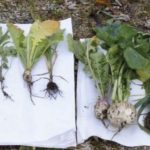Tag Archives Soil

The prospect of farming in the Great Clay Belt
It may be too daunting for some, but the potential is there

Expanding knowledge about cover cropping effects
Tour hosted by Soils@Guelph puts current research efforts on display

Genetic engineering of microbes lower fertilizer dependence
Science Notes: Nitrogen-fixing microbes could help crops pull nitrogen from the air

Assessing strength, building on foundation key to soil health
Crop advisor says soil health options will vary by farm and by economics

Soil microbes help plants cope with drought
Science Notes: Microbes seen to adapt to drought over time

A soil health investigation
It took old and new technology to diagnose compaction as the culprit

Ontario’s new Living Lab to receive $12 million over five years
Projects focused on innovation and adoption of on-farm climate change practices

Evaluating your soil’s structure
Why it’s important and how to measure quality

How to get the most from farm drainage investment
It comes from exploring the benefits of proper drainage

Maximizing nitrogen availability with manure and cover crops
Considerations for nitrogen availability timing in corn


